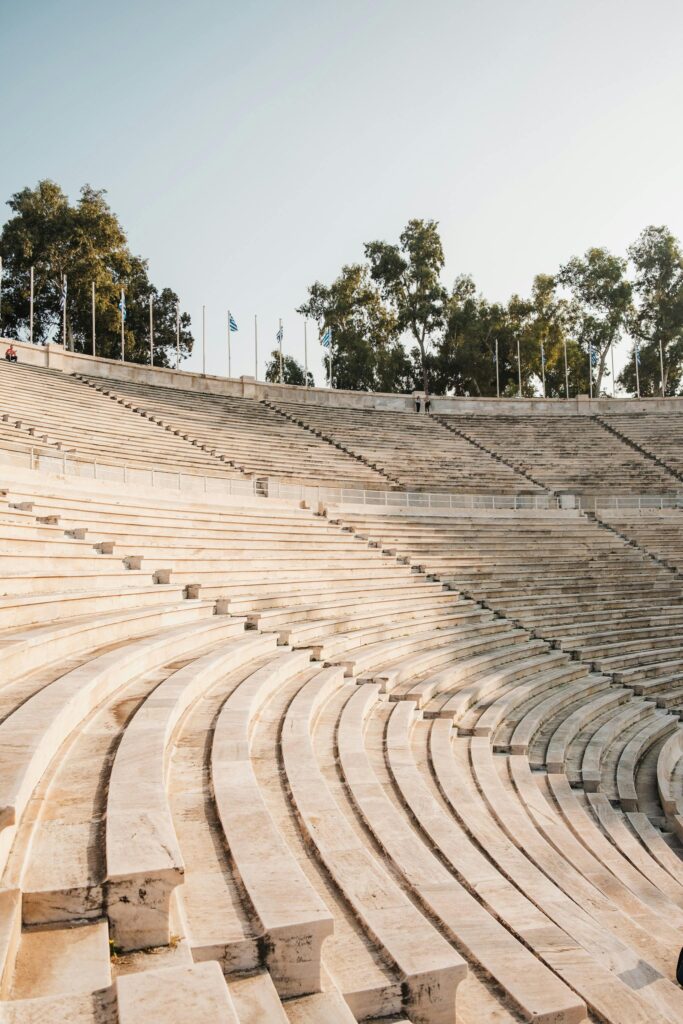In this fascinating article, you will explore the captivating history behind unique timekeeping pieces. From ancient sundials to modern luxury watches, you will uncover the evolution and significance of these remarkable instruments throughout the centuries. Dive into the world of timekeeping as you unravel the innovative techniques and intricate craftsmanship that have shaped our perception of time. Get ready to embark on a journey that will leave you with a newfound appreciation for the art and science behind these timeless treasures.

Sundials
Definition and early development
Sundials are ancient timekeeping devices that rely on the position of the sun to indicate the time of day. The earliest sundials can be traced back to ancient Egypt and Mesopotamia, where they were used as early as 1500 BCE. These early sundials consisted of a vertical stick, known as a gnomon, that cast a shadow on a circular plate marked with hours. As the sun moved across the sky, the shadow would move accordingly, indicating the time.
Mechanics and design
The mechanics behind sundials are relatively simple but ingenious. The gnomon is positioned at an angle that aligns it with the sun’s rays. As the sun moves from east to west, the shadow cast by the gnomon lengthens and moves, allowing the viewer to determine the time. Sundials were often designed with intricate and artistic patterns on the dial plate, making them not only practical timekeeping devices but also decorative pieces.
Use and significance
Sundials played a crucial role in ancient civilizations, providing a means to measure time and schedule daily activities. They were particularly valuable for agricultural societies that relied on the seasons and sunlight for farming. Sundials were used in various cultures worldwide, including ancient Greece, Rome, and China. As one of the earliest forms of timekeeping, sundials hold significant historical and cultural importance. While they have been largely replaced by more accurate and portable timepieces, sundials continue to serve as reminders of our ancient past and the ingenuity of our ancestors.
Water Clocks
Early invention and evolution
Water clocks, also known as clepsydra, were invented even earlier than sundials, with evidence of their existence dating back to ancient Egypt and Babylon around 1500 BCE. These early water clocks were simple containers with calibrated markings that allowed the measurement of time based on the flow of water. Over time, water clocks evolved to become more sophisticated, incorporating mechanisms such as float valves and gears to regulate the flow of water and ensure more accurate timekeeping.
Functioning and components
Water clocks operated on the principle that a certain amount of water would flow from a container into another over a specific duration, marking the passage of time. The container usually had markings or indicators that indicated the time. More advanced water clocks incorporated mechanisms to regulate the flow of water, such as a float valve that controlled the release of water. The size of the opening through which the water flowed determined the pace at which time passed, allowing for different intervals of measurement.
Cultural impact
Water clocks played a significant role in ancient civilizations, allowing for the standardized measurement of time across different regions. They were particularly useful in areas without access to reliable sunlight, such as underground tombs or cloudy regions. Water clocks were also used in religious ceremonies and astronomical observatories, aiding in the tracking of celestial events. The precision and complexity of water clocks demonstrated the advanced engineering knowledge of ancient societies and laid the foundation for future timekeeping inventions.
Candle Clocks
Origins and design
Candle clocks, as the name suggests, utilized candles as a means to keep track of time. These timepieces originated in ancient China during the Tang Dynasty (618-907 CE) and spread to other cultures over time. Candle clocks typically consisted of candles marked with intervals indicating the passage of time. As the candle burned down, the marking indicated the elapsed time.
Measurement and accuracy
Candle clocks were not the most accurate timekeeping devices, as the rate at which the candle burned varied depending on factors such as the quality of the candle wax, the thickness of the wick, and environmental conditions. However, they were still useful for shorter time intervals or when a rough estimate of time was sufficient. Candle clocks were commonly used in monastic settings, as they provided a simple and visual means of tracking time for daily prayers and meditation.
Decline in popularity
With the advent of more accurate and reliable timekeeping devices, such as mechanical clocks, candle clocks gradually fell out of favor. The inconsistency and limitations in measuring time using candles made them less practical for everyday use. Nonetheless, candle clocks hold a unique place in the history of timekeeping, showcasing the ingenuity of early inventors and the reliance on innovative methods to measure time.
Hourglasses
Ancient origins
Hourglasses, also known as sandglasses, have been used as timekeeping devices for centuries. Their origins can be traced back to ancient Greece, where they were believed to have been invented around the 8th century BCE. However, similar devices were used earlier by the ancient Egyptians, Romans, and Persians.
Construction and usage
Hourglasses consist of two glass bulbs connected by a narrow neck, with sand or powdered material placed inside. The sand flows from one bulb to the other, taking a predetermined amount of time to complete the process. The time it takes for the sand to pass through the neck is determined by the size and shape of the bulbs and the consistency of the sand. Hourglasses were often designed with different time intervals, commonly ranging from 30 minutes to one hour.
Symbolism and cultural references
Hourglasses were not only practical timekeeping devices but also held symbolic meanings. They represented the passing of time and the finite nature of life. Hourglasses were commonly associated with concepts such as patience, contemplation, and the inevitable march of time. They were often depicted in artwork, literature, and religious contexts, reminding individuals of the transient nature of existence.

Pendulum Clocks
Origin and innovation
Pendulum clocks revolutionized timekeeping in the 17th century with their introduction of a highly accurate mechanical timekeeping mechanism. The first pendulum clock was invented by Dutch scientist Christiaan Huygens in 1656. Huygens discovered that using a pendulum, a weight suspended from a fixed point that swings back and forth, could regulate the movement of a clock’s gears. This innovative mechanism allowed for greater precision in timekeeping.
Precision and accuracy
Pendulum clocks represented a significant leap forward in timekeeping accuracy. The regular, oscillating motion of the pendulum provided a highly reliable means of measuring time. By adjusting the length of the pendulum, clockmakers could regulate the speed at which the gears turned, ensuring consistent accuracy. Pendulum clocks were far superior to their predecessors, with some models capable of keeping time within seconds per day.
Revolutionary impact
The invention of pendulum clocks led to a major shift in timekeeping technology. Their accuracy and reliability led to increased efficiency in various fields such as astronomy, navigation, and industry. Pendulum clocks played a crucial role in the scientific revolution of the 17th and 18th centuries, allowing for more precise observations and calculations. Moreover, the development of pendulum clocks set the stage for further advancements in mechanical clock mechanisms, paving the way for more sophisticated timekeeping devices.
Pocket Watches
Rise in popularity
Pocket watches gained popularity in the 16th century and became a fashionable and practical accessory for the elite. The development of smaller, more portable mechanical movements allowed for the creation of watches that could be carried in pockets or attached to clothing. Pocket watches soon became status symbols and a way to display one’s wealth and refinement.
Design and craftsmanship
Pocket watches were crafted with intricate detailing and exquisite craftsmanship. The cases were often made of precious metals, such as gold or silver, and adorned with engravings or gemstones. The dials were beautifully designed, often featuring Roman numerals and elegant hour and minute hands. Pocket watches were not only functional timepieces but also prized possessions that showcased both the skill of the watchmaker and the taste of the owner.
Transition to wristwatches
The transition from pocket watches to wristwatches began in the late 19th and early 20th centuries. As technology improved and lifestyles became more fast-paced, the convenience of wearing a watch on the wrist became evident. Wristwatches were initially considered more suitable for women, but they quickly gained popularity among men during World War I when soldiers found them more practical for timekeeping in the field. The transition to wristwatches marked a significant shift in the history of timekeeping, adapting to the changing needs and preferences of society.

Grandfather Clocks
Invention and development
Grandfather clocks, also known as longcase clocks, originated in the late 17th century and were named for their impressive height and stature. The invention of the first grandfather clock is attributed to English clockmaker William Clement in the 1670s. These clocks featured long pendulums enclosed within large wooden cases, making them highly accurate and visually striking timepieces.
Aesthetics and functionality
Grandfather clocks quickly became sought-after pieces of furniture, admired for their ornate designs and melodious chimes. The wooden cases were often intricately carved and featured elegant details such as glass doors, brass accents, and moon phase dials. The long pendulum inside provided a consistent swing, ensuring accurate timekeeping. Grandfather clocks were not only functional timepieces but also cherished heirlooms and status symbols, often passed down through generations.
Status symbol and heirlooms
Owning a grandfather clock was a sign of wealth and refinement, as these timepieces were expensive and luxurious. They adorned the homes of the upper class, adding a touch of elegance and sophistication. Grandfather clocks were also cherished as family heirlooms, symbolizing the passage of time and the connection to one’s ancestors. Even today, these timeless timepieces continue to be treasured possessions and conversation pieces in many homes around the world.
Atomic Clocks
Scientific breakthrough
Atomic clocks represent the pinnacle of timekeeping accuracy. They rely on the vibrations of atoms or molecules to measure time with extraordinary precision. The development of atomic clocks began in the mid-20th century and was a result of advancements in quantum physics. The first atomic clock, based on the vibrations of cesium atoms, was developed in 1955, and it marked a significant breakthrough in timekeeping technology.
Technology and accuracy
Atomic clocks utilize the vibrations of atoms or molecules, which are extremely stable and consistent, to measure time. The atoms are excited and then oscillate at a specific frequency, acting as a natural and highly accurate timekeeping mechanism. Atomic clocks are so precise that they can maintain an accuracy within a few billionths of a second per day, making them the most accurate timekeeping devices ever created.
Modern applications
Atomic clocks have numerous applications in scientific research, telecommunications, navigational systems, and space exploration. They are essential for precise synchronization of worldwide communication networks, GPS systems, and satellite operations. Atomic clocks also play a crucial role in fundamental scientific experiments and the study of the nature of time itself. While atomic clocks are not commonly found in households due to their high cost and complex infrastructure, their impact on modern technology and scientific discoveries is immeasurable.
Digital Clocks
Introduction and digital revolution
Digital clocks emerged in the mid-20th century with the advent of electronic technology. The transition from mechanical to digital timekeeping marked a significant shift in the way we perceive and interact with time. Digital clocks replaced the traditional hour and minute hands with numerical displays, providing a more accurate and easily readable representation of time.
Features and versatility
Digital clocks quickly gained popularity due to their simplicity and ease of use. They offered features such as 24-hour time formats, alarms, timers, and even temperature displays. The numerical readout made it easier to accurately track time, especially for individuals with visual impairments or those needing precise timekeeping in professional settings. The versatility of digital clocks allowed for their integration into various devices, such as microwaves, car dashboards, and smartphones, becoming an integral part of our daily lives.
Impact on traditional timekeeping
The introduction of digital clocks brought about a fundamental change in how time was perceived and measured. The traditional mechanical components of clocks were replaced by electronic circuits, quartz crystals, and liquid crystal displays. While digital clocks provided greater accuracy and convenience, some argue that they lacked the charm and craftsmanship of traditional mechanical timepieces. Nonetheless, digital clocks played a significant role in the digital revolution, setting the stage for further advancements in timekeeping technology.
Smartwatches
Emergence and evolution
Smartwatches represent the latest evolution in timekeeping, combining traditional watch functions with advanced technology. The first modern smartwatches were introduced in the early 2010s and have since become increasingly sophisticated and popular. These wearable devices offer features beyond timekeeping, such as fitness tracking, notifications, app integration, and even cellular connectivity.
Integration of technology and fashion
Smartwatches have bridged the gap between technology and fashion, offering stylish designs that appeal to a wide range of individuals. Manufacturers have focused on creating sleek, slim, and customizable designs to cater to different tastes. Smartwatches have become fashion accessories, allowing users to express their personal style while also enjoying the convenience and functionality of advanced technology.
Personalization and health tracking
One of the key features of smartwatches is their ability to be personalized to meet individual needs and preferences. Users can customize watch faces, choose from a variety of straps, and install apps that cater to their specific interests. Smartwatches also provide robust health-related features, such as heart rate monitoring, sleep tracking, and workout tracking. These devices have become valuable tools in promoting wellness and encouraging an active lifestyle.
In conclusion, the history of unique timekeeping pieces is a fascinating journey through the ingenuity and innovation of our ancestors. From ancient sundials and water clocks to the modern smartwatches of today, timekeeping devices have evolved to meet the changing needs of society. Each timekeeping piece represents a different chapter in human history, showcasing advancements in technology, culture, and aesthetics. As we continue to embrace new technologies, it’s essential to remember and appreciate the rich legacy of these unique timekeeping pieces and their role in shaping our perception of time.

